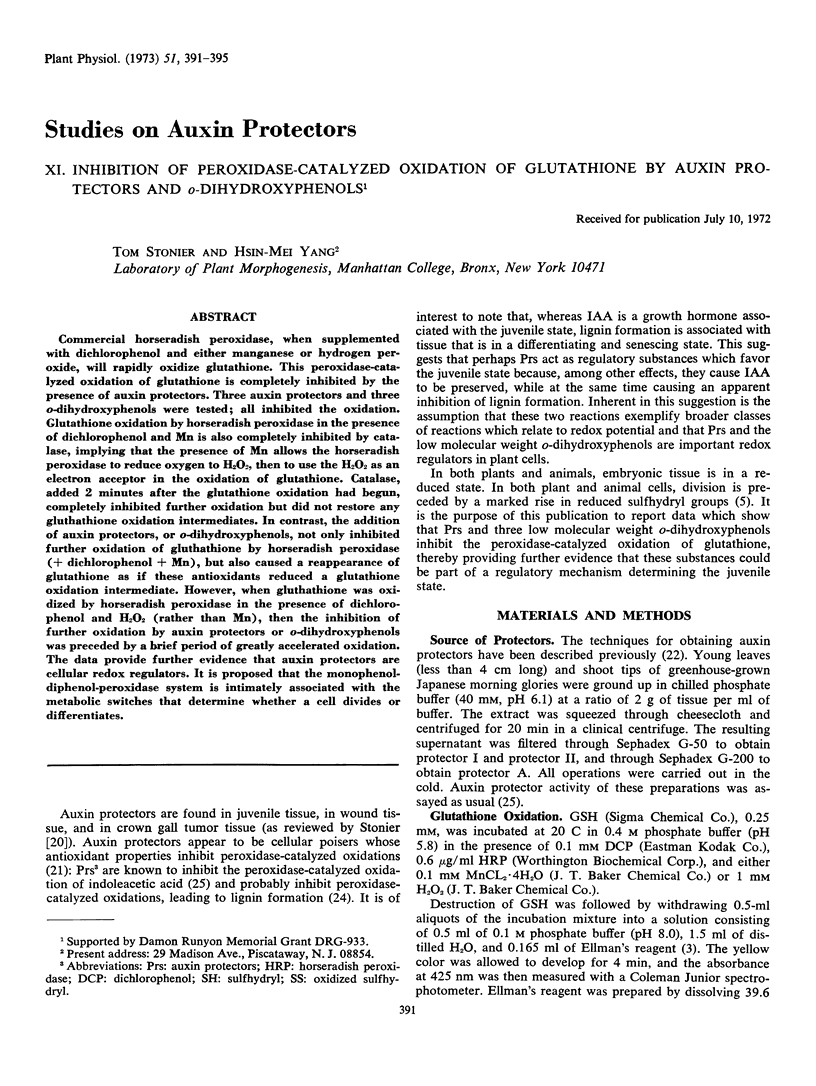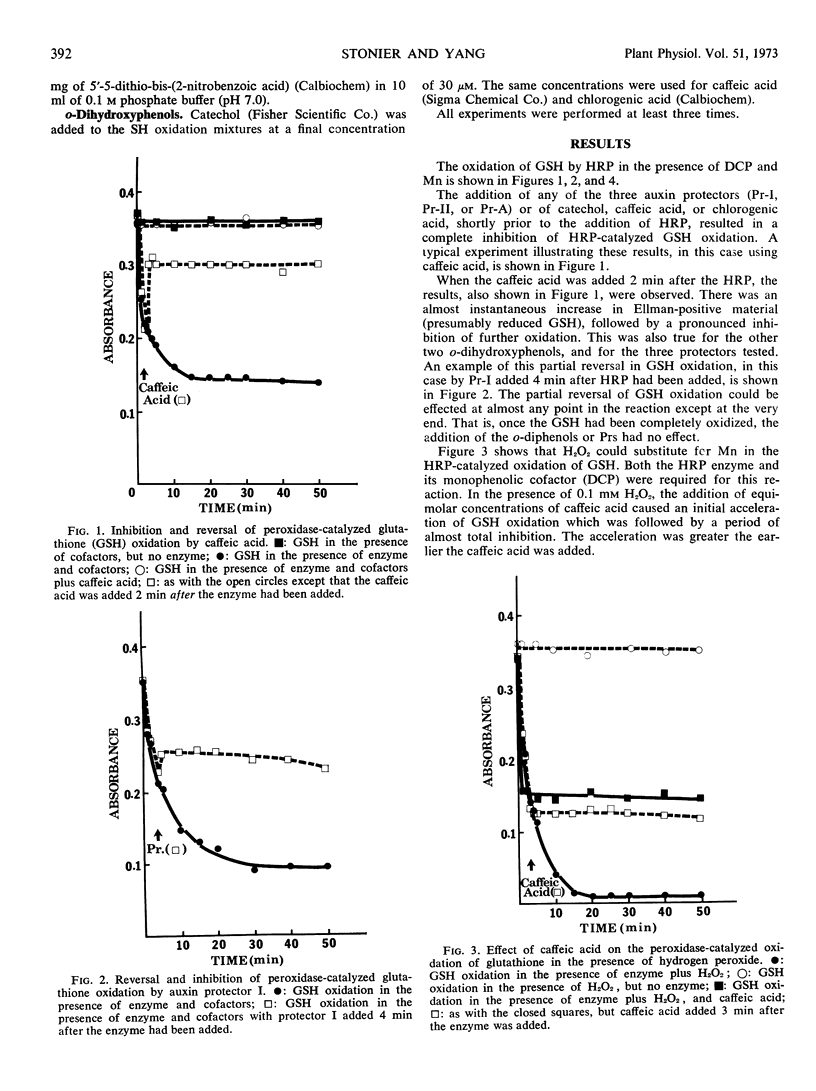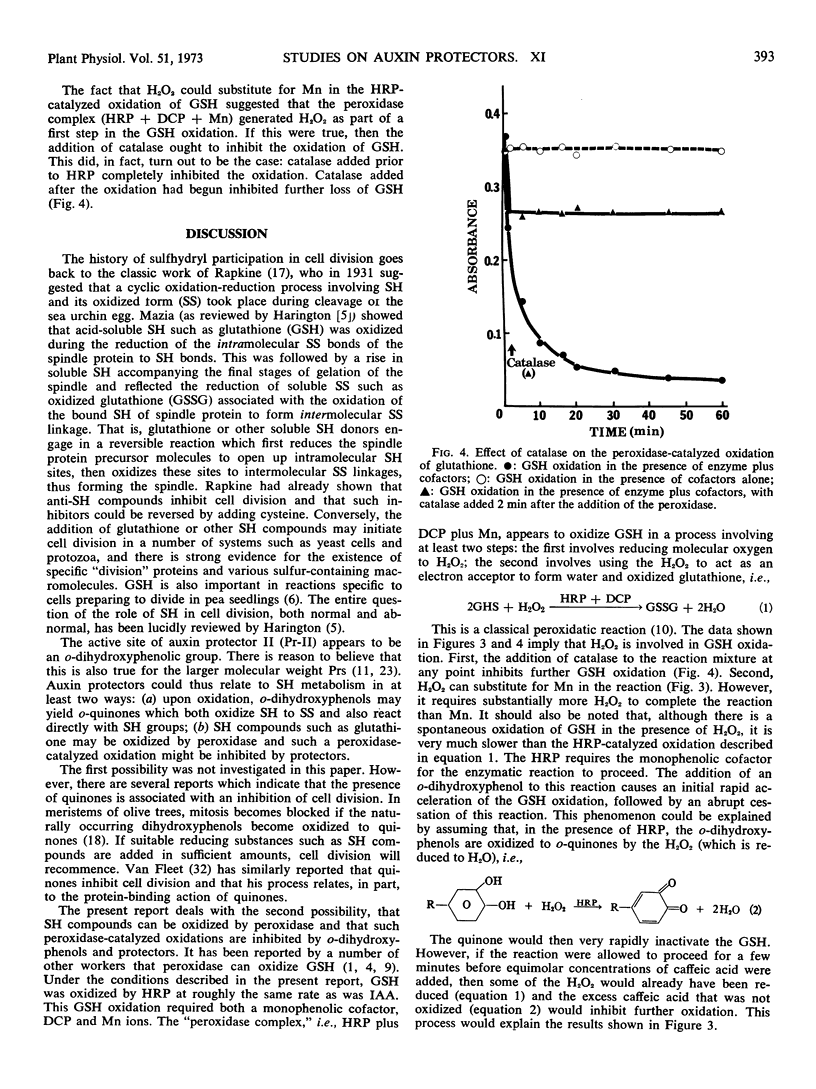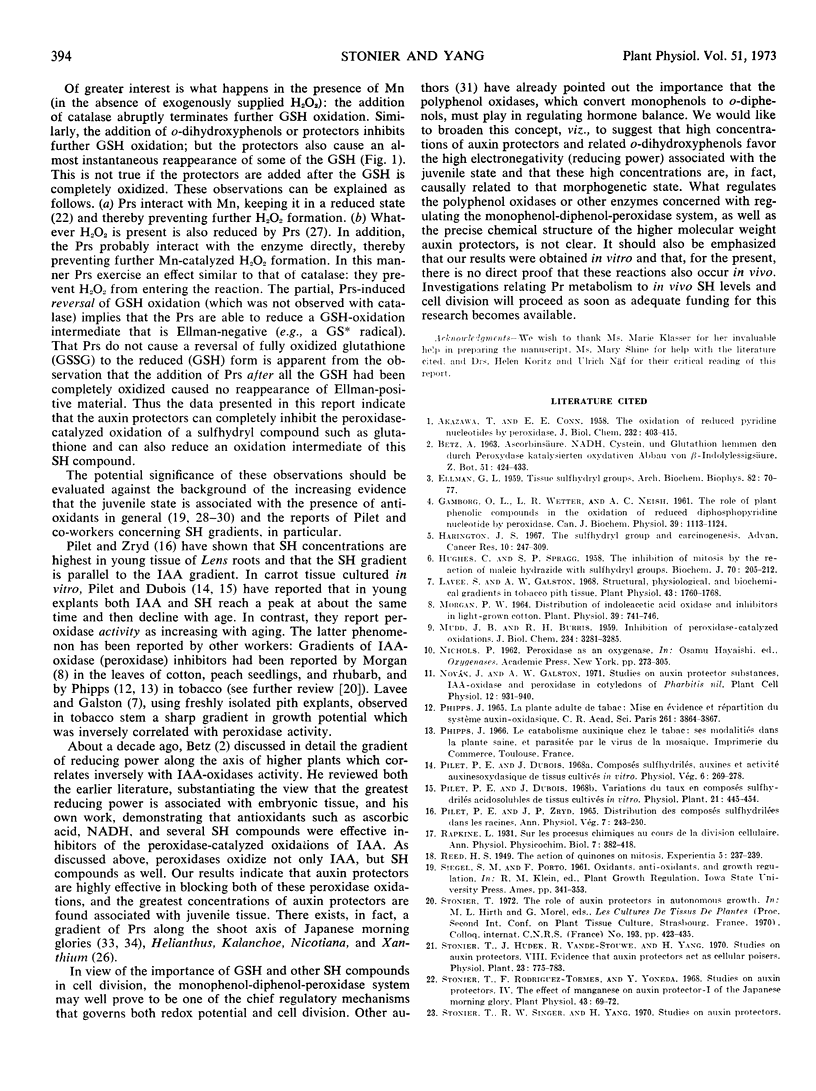Abstract
Commercial horseradish peroxidase, when supplemented with dichlorophenol and either manganese or hydrogen peroxide, will rapidly oxidize glutathione. This peroxidase-catalyzed oxidation of glutathione is completely inhibited by the presence of auxin protectors. Three auxin protectors and three o-dihydroxyphenols were tested; all inhibited the oxidation. Glutathione oxidation by horseradish peroxidase in the presence of dichlorophenol and Mn is also completely inhibited by catalase, implying that the presence of Mn allows the horseradish peroxidase to reduce oxygen to H2O2, then to use the H2O2 as an electron acceptor in the oxidation of glutathione. Catalase, added 2 minutes after the glutathione oxidation had begun, completely inhibited further oxidation but did not restore any gluthathione oxidation intermediates. In contrast, the addition of auxin protectors, or o-dihydroxyphenols, not only inhibited further oxidation of gluthathione by horseradish peroxidase (+ dichlorophenol + Mn), but also caused a reappearance of glutathione as if these antioxidants reduced a glutathione oxidation intermediate. However, when gluthathione was oxidized by horseradish peroxidase in the presence of dichlorophenol and H2O2 (rather than Mn), then the inhibition of further oxidation by auxin protectors or o-dihydroxyphenols was preceded by a brief period of greatly accelerated oxidation. The data provide further evidence that auxin protectors are cellular redox regulators. It is proposed that the monophenol-diphenol-peroxidase system is intimately associated with the metabolic switches that determine whether a cell divides or differentiates.
Full text
PDF




Selected References
These references are in PubMed. This may not be the complete list of references from this article.
- AKAZAWA T., CONN E. E. The oxidation of reduced pyridine nucleotides by peroxidase. J Biol Chem. 1958 May;232(1):403–415. [PubMed] [Google Scholar]
- HUGHES C., SPRAGG S. P. The inhibition of mitosis by the reaction of maleic hydrazide with sulphydryl groups. Biochem J. 1958 Oct;70(2):205–212. doi: 10.1042/bj0700205. [DOI] [PMC free article] [PubMed] [Google Scholar]
- Harington J. S. The sulfhydryl group and carcinogenesis. Adv Cancer Res. 1967;10:247–309. doi: 10.1016/s0065-230x(08)60080-9. [DOI] [PubMed] [Google Scholar]
- Lavee S., Galston A. W. Structural physiological, and biochemical gradients in tobacco pith tissue. Plant Physiol. 1968 Nov;43(11):1760–1768. doi: 10.1104/pp.43.11.1760. [DOI] [PMC free article] [PubMed] [Google Scholar]
- Morgan P. W. Distribution of Indoleacetic Acid Oxidase and Inhibitors in Light-Grown Cotton. Plant Physiol. 1964 Sep;39(5):741–746. doi: 10.1104/pp.39.5.741. [DOI] [PMC free article] [PubMed] [Google Scholar]
- Stonier T., Rodriguez-Tormes F., Yoneda Y. Studies on Auxin Protectors. IV. The Effect of Manganese on Auxin Protector-I of the Japanese Morning Glory. Plant Physiol. 1968 Jan;43(1):69–72. doi: 10.1104/pp.43.1.69. [DOI] [PMC free article] [PubMed] [Google Scholar]
- Stonier T., Yoneda Y., Rodriguez-Tormes F. Studies on Auxin Protectors. V. On the Mechanism of IAA Protection by Protector-I of the Japanese Morning Glory. Plant Physiol. 1968 Jul;43(7):1141–1145. doi: 10.1104/pp.43.7.1141. [DOI] [PMC free article] [PubMed] [Google Scholar]
- Szent-Györgyi A. Bioelectronics. Intermolecular electron transfer may play a major role in biological regulation, defense, and cancer. Science. 1968 Sep 6;161(3845):988–990. doi: 10.1126/science.161.3845.988. [DOI] [PubMed] [Google Scholar]
- Tomaszewski M., Thimann K. V. Interactions of phenolic acids, metallic ions and chelating agents on auxin-induced growth. Plant Physiol. 1966 Nov;41(9):1443–1454. doi: 10.1104/pp.41.9.1443. [DOI] [PMC free article] [PubMed] [Google Scholar]
- Yoneda Y., Stonier T. Distribution of Three Auxin Protector Substances in Seeds and Shoots of the Japanese Morning Glory (Pharbitis nil). Plant Physiol. 1967 Jul;42(7):1017–1020. doi: 10.1104/pp.42.7.1017. [DOI] [PMC free article] [PubMed] [Google Scholar]


